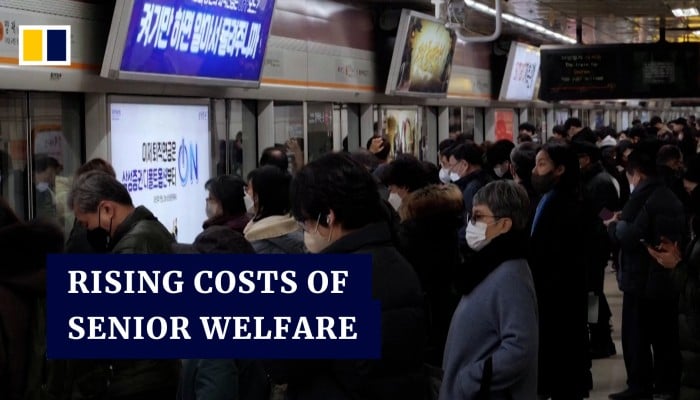
For nearly eight years, 69-year-old Lee has worked three hours a day as a home caregiver in Bucheon, a city just west of Seoul. Though her children are grown and financially independent, she continues to work out of necessity. “Most of us are in our 60s or 70s,” she said of her fellow caregivers. “We plan to keep working until our bodies give out.”
Lee is part of a growing demographic: South Korea’s rapidly aging population is staying in the labor force longer than ever, propelled less by choice than by financial need. Despite its transition into a “super-aged society,” as defined by the United Nations, the country still lacks a robust pension system, leaving many elderly citizens with little option but to remain employed.
According to data released by Statistics Korea, 40.8 percent of South Koreans aged 65 and older were employed in the second quarter of 2025—the highest figure since the government began tracking the metric in 1999. The rate has climbed steadily for 31 consecutive quarters, surpassing Japan’s 25.3 percent and far exceeding the OECD average of 13.6 percent.
Experts attribute the trend to a combination of increasing life expectancy, delayed retirement, and inadequate pension coverage. As of 2022, the average monthly payout across public and private pensions was just 650,000 won—barely more than half the government’s estimated minimum cost of living for a single-person household (1.16 million won).
A cultural shift has further deepened the strain. Reliance on adult children for financial support is declining. A 2023 national social survey found that just 12 percent of seniors listed family contributions as a main source of income, down from 28.8 percent a decade earlier.
While policymakers often cite the continued economic activity of the elderly as a positive trend, the quality of these jobs remains a concern. Most seniors are in low-wage, unstable positions. In an August 2024 labor survey, 61.2 percent of employed seniors were classified as non-regular workers—nearly double the rate among those in their 50s. Nearly half (49.4 percent) were employed by microbusinesses with fewer than 10 employees.
Many are also working in roles far removed from their previous careers. A separate survey covering 10.74 million Koreans aged 55 to 79 found that only 29.3 percent of seniors were employed in sectors related to their main occupations during their 30s to 50s.
Meanwhile, younger workers face a tightening labor market. The employment rate among South Koreans aged 15 to 29 declined for the fifth straight quarter in Q2 2025, falling to 45.7 percent—a drop of 0.9 percentage points from a year earlier. The prolonged weakness marks the worst run since the COVID-19 pandemic. Sluggish domestic demand and pressure on South Korea’s export-oriented manufacturing sector have dragged on youth hiring.
As a result, the gap between the employment rates of the young and the old has narrowed to historic lows. In the second quarter, the difference between the two groups stood at just 4.9 percentage points—the smallest on record. The current over-65 employment rate now surpasses the youth employment rate recorded in early 2009, in the wake of the global financial crisis.
Economists say labor market reforms must go beyond boosting employment rates and address the intergenerational imbalance. Lee Jung-hee, an economics professor at Chung-Ang University, said re-employment schemes should be expanded to allow seniors to pass on their skills while enabling younger workers to boost productivity. “We need an integrated job model that fosters intergenerational knowledge transfer and long-term efficiency,” he said.
Komentar
Posting Komentar